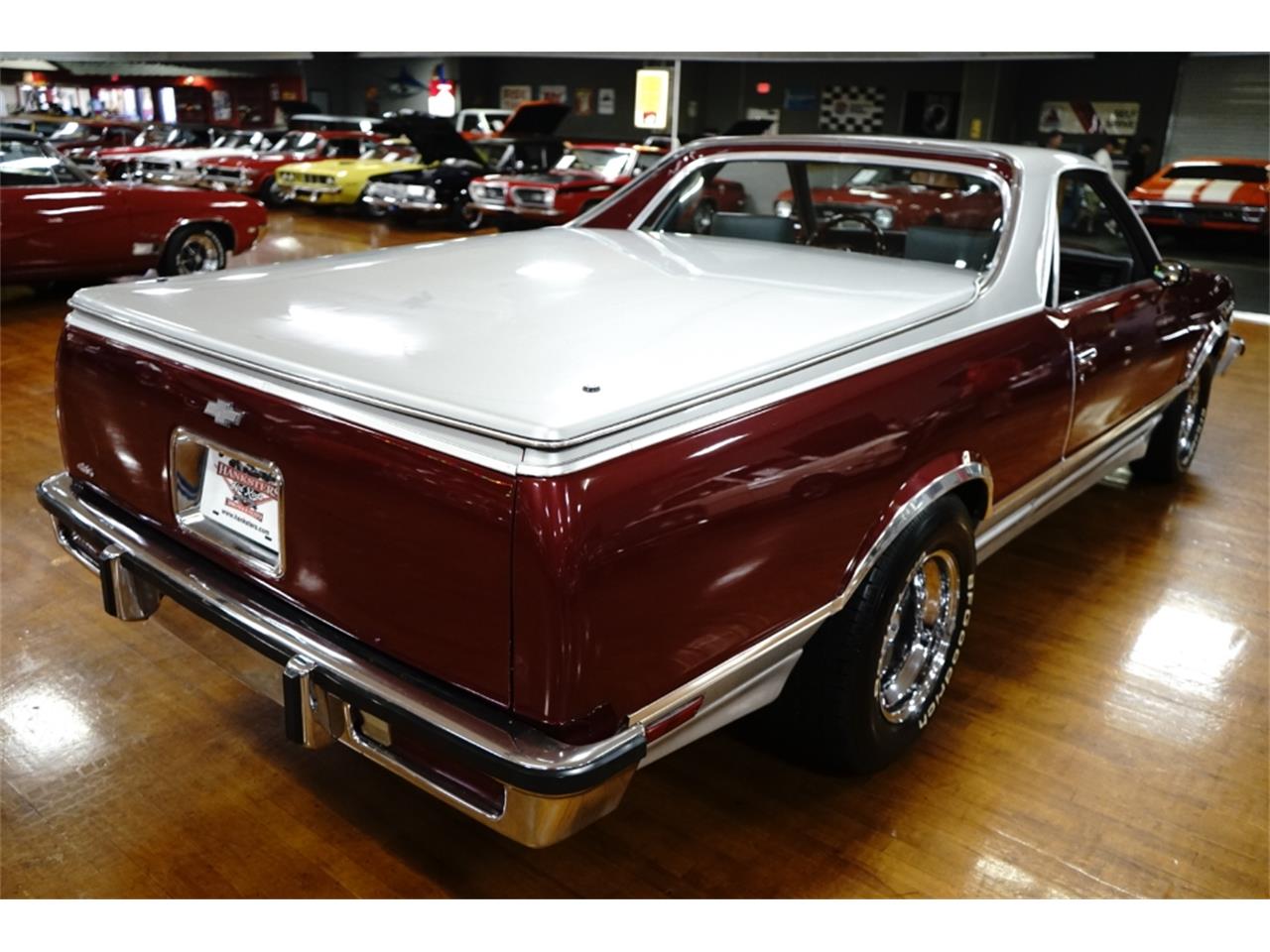
General Motors’ Australian subsidiary Holden also produced a Chevrolet coupé utility in 1935, and Studebaker produced the Coupé Express from 1937 to 1939.
1984 el camino carburetor series#
Bandt went on to manage Ford's Advanced Design Department, being responsible for the body engineering of the XP, XT, XW, and XA series Ford Falcon utilities. Ford designer Lew Bandt developed a suitable solution, and the first coupé utility model was released in 1934. įord Australia was the first company to produce a coupé utility as a result of a 1932 letter from the wife of a farmer in Victoria, Australia, asking for "a vehicle to go to church in on a Sunday and which can carry our pigs to market on Mondays". The concept of a two-door vehicle based on a passenger car chassis with a tray at the rear began in the United States in the 1920s with the roadster utility (also called "roadster pickup" or "light delivery") models.

Renamed Caballero in 1978, it was also produced through the 1987 model year. GMC's badge engineered El Camino variant, the Sprint, was introduced for the 1971 model year. Production resumed for the 1964–1977 model years based on the Chevelle platform, and continued for the 1978–1987 model years based on the GM G-body platform.Īlthough based on corresponding General Motors car lines, the vehicle is classified in the United States as a pickup. Introduced in the 1959 model year in response to the success of the Ford Ranchero coupé utility, its first run, based on the Biscayne's B-body, lasted only two years. Unlike a standard pickup truck, the El Camino was adapted from the standard two-door Chevrolet station wagon platform and integrated the cab and cargo bed into the body. Repeat steps 3 and 4. If unable to obtain specified dwell reading, proceed as follows:Ī. If reading is below 25°, turn mixture screws counterclockwise 1 turn, then repeat steps 3 and 4.ī. If reading is above 35°, turn mixture screws clockwise 1 turn, then repeat steps 3 and 4.The Chevrolet El Camino is a coupé utility vehicle that was produced by Chevrolet between 1959––1987. Reinstall carburetor using a new gasket, with air cleaner removed, and vacuum hoses disconnected and plugged as outlined on underhood vehicle Turn each mixture screw in (clockwise) until lightly seated, then back screws out specified number of turns, Fig. 8. ``Concealment Plug Removal'' in the appropriate carburetor section. If unable to adjust dwell reading to specifications, or if reading does not fluctuate, remove plugs covering idle mixture screws as outlined under

Increments, allowing time between adjustments for engine to stabilize. Place automatic transmission in Drive (manual transmission in Neutral) and adjust idle air bleed valve to obtain a fluctuating dwell readingīetween 25° and 35° (as close to 30° as possible), at specified curb idle speed. Bleed valve is very sensitive to adjustment. Adjust valve in small Start engine and run until it reaches normal operating temperature and dwell reading begins to fluctuate. Hold gauge down lightly to bottom MC solenoid plunger, then adjust idle air bleed valve so tool will pivot over and just contact top of valve. Install gauging tool J-33815-2 or equivalent in ``D'' shaped hole on throttle side of air horn, Fig. 7, with end of tool positioned above open cavity



 0 kommentar(er)
0 kommentar(er)
